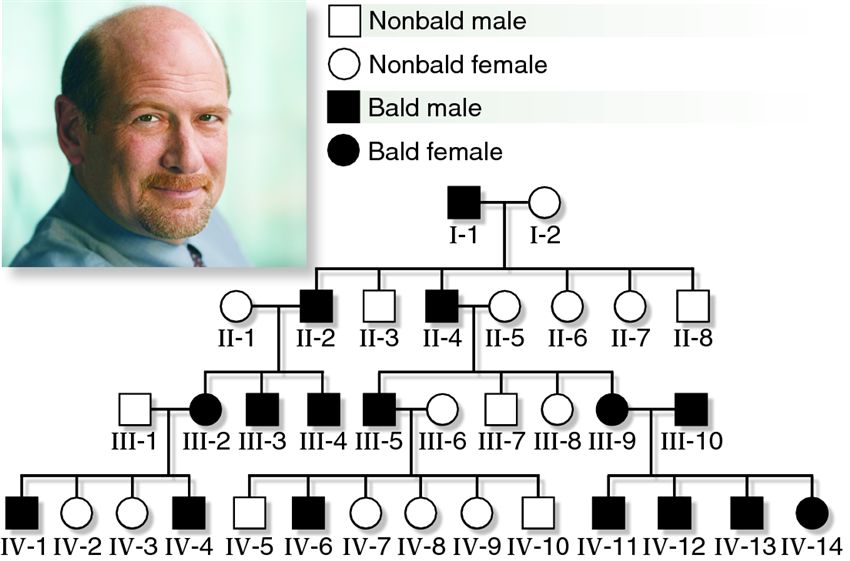 |
||||||||
| Previous Image | Next Image | ||||||||
| Description: Pattern baldness, shown in an adult male in the photograph, is an example of the sex-influenced expression of an autosomal gene. Bald individuals are represented by filled symbols in the pedigree. As you can see from the pedigree in Figure 15.21, a bald male may have inherited the baldness allele from either parent. Thus, a striking observation is that fathers with pattern baldness can pass this trait to their sons. This could not occur if the trait was X-linked, because fathers transmit only Y chromosomes to their sons. Certain autosomal genes are expressed differently in heterozygous males and females. The term sex-influenced inheritance refers to the phenomenon in which an allele is dominant in one sex but recessive in the other. Pattern baldness is an example of a sex-influenced trait in humans. This trait is characterized by a balding pattern in which hair loss occurs on the front and top of the head but not on the sides (Figure 15.21). A woman who is homozygous for the baldness allele will develop the trait (although in women it is usually characterized by a significant thinning of the hair that occurs relatively late in life). A male who is heterozygous for the pattern-baldness allele (designated B) will become bald, but a heterozygous female will not. In other words, the baldness allele is recessive in females but dominant in males:
The sex-influenced nature of pattern baldness is related to the production of the male sex hormone testosterone. The gene that affects pattern baldness encodes an enzyme called 5-?-reductase, which converts testosterone to 5-?-dihydrotestosterone (DHT). DHT binds to cellular receptors and affects the expression of many genes, including those in the cells of the scalp. The allele that causes pattern baldness results in an overexpression of this enzyme. Because mature males normally make more testosterone than females do, this allele has a greater phenotypic impact in males. However, a rare tumour of the adrenal gland can cause the secretion of abnormally large amounts of testosterone in females. If this occurs in a woman who is heterozygous Bb, she will become bald. If the tumour is removed surgically, her hair will return to its normal condition. Picture Stats: Views: 419501 Filesize: 65.18kB Height: 561 Width: 850 Source: https://biology-forums.com/index.php?action=gallery;sa=view;id=530 Keywords: Pattern baldness |
